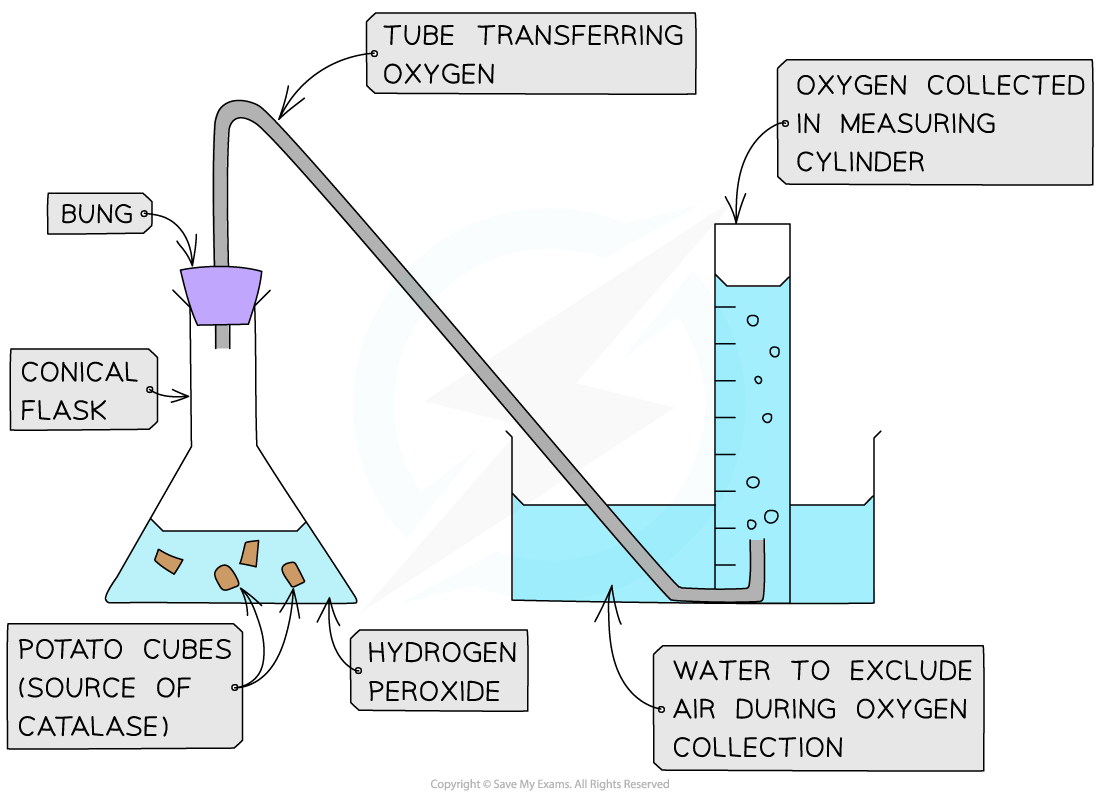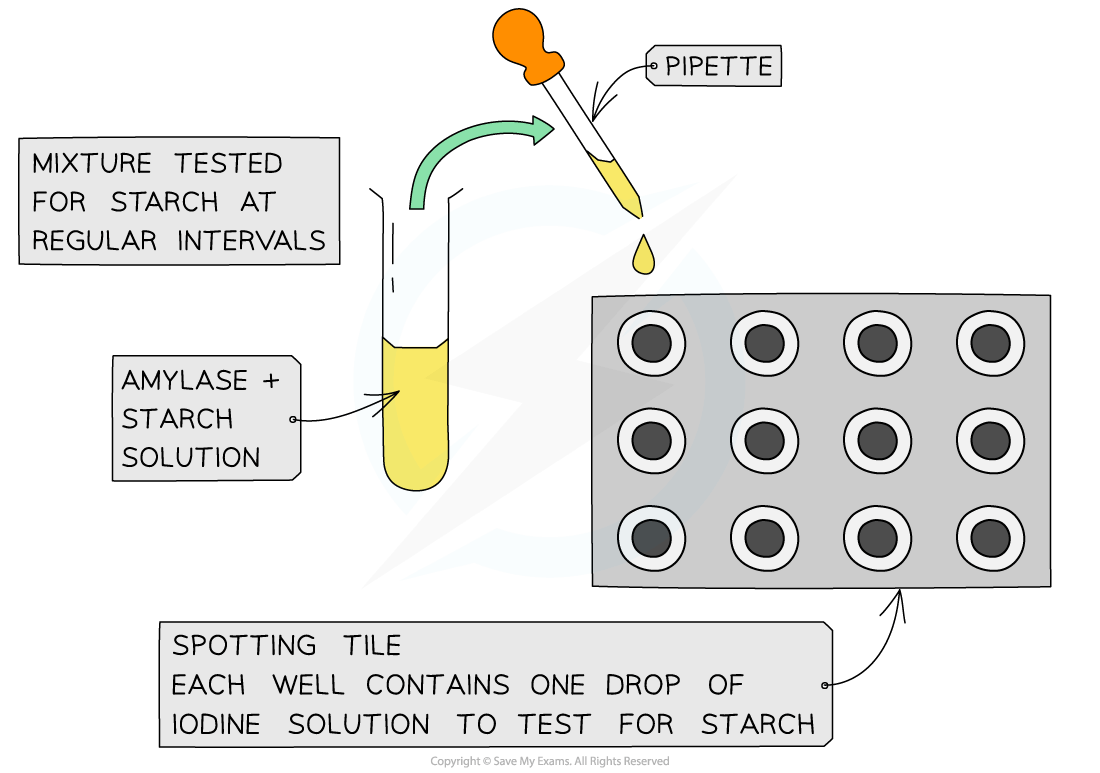Measuring Enzyme Activity (Cambridge (CIE) A Level Biology): Revision Note
Exam code: 9700
Measuring enzyme activity
The progress of enzyme-catalysed reactions can be investigated by:
Measuring the rate of formation of a product using catalase
Measuring the rate of disappearance of a substrate using amylase
Investigating catalase activity
In this investigation, the rate of product formation is used to measure the rate of an enzyme-controlled reaction:
Hydrogen peroxide is a common but toxic by-product of metabolism
This means it must be broken down quickly
Catalase is an enzyme found in the cells of most organisms that breaks hydrogen peroxide down into water and oxygen
Hydrogen peroxide and catalase are combined and the volume of oxygen generated is measured in a set time
The rate of reaction can then be calculated

Investigating amylase activity
In this investigation, the rate of substrate disappearance is used to compare rates of reaction under different conditions:
Amylase is a digestive enzyme that hydrolyses starch into maltose and glucose
Amylase functions best at pH 7 and 37oC (all enzymes operate best under specific optimal conditions)
Amylase and starch are combined and this reaction mixture is then tested for starch at regular time intervals
This can be done by taking samples from the reaction mixture at each time interval and adding each sample to some iodine solution (starch forms a blue-black colour with this solution)
In this way, the time taken for starch to be broken down can be measured
The investigation can be repeated under a variety of conditions (e.g. by altering pH or temperature) and the reaction rates can then be compared

Examiner Tips and Tricks
Examiners look for awareness of control variables such as temperature, pH, enzyme concentration, and substrate concentration.
If these are not kept the same, you can’t be sure that changes in rate are due only to the factor you’re testing.

Unlock more, it's free!
Did this page help you?